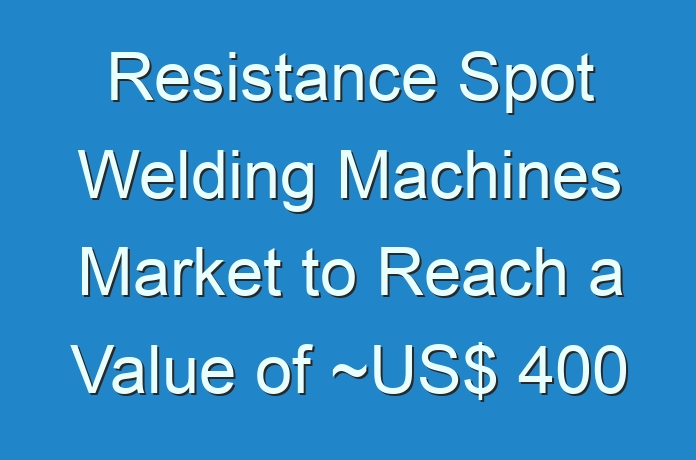
Squeeze Type Machines Aid End Users with Better Longevity of Repairs
The automotive sector is projected to dominate the resistance spot welding machines market throughout the forecast period, with an estimated output of ~12,800 units by the end of 2027. This is why, companies in the resistance spot welding machines market are increasing the availability of squeeze type resistance spot welding machines to cater to the needs of automotive manufacturers.
Automotive manufacturers are heavily investing in extensive research to deploy lightweight materials, such as high-strength steel and aluminum alloys, to manufacture electronic equipment in vehicles for end-user convenience. Equipment companies in the resistance spot welding machines market are fulfilling this expectation of automotive manufacturers by introducing cutting-edge squeeze type resistance spot welders (STRSWs) in the market landscape.
Want to know the obstructions to your company’s growth in future? Request a brochure @ https://www.transparencymarketresearch.com/sample/sample.php?flag=S&rep_id=74395
As resistance spot welding is becoming increasingly mainstream in the automotive space, squeeze type resistance spot welding machines are being increasingly used for the repair of vehicles, owing to their limited heat deployment and better corrosion protection. These attributes help consumers, since the machine’s technique adds longevity to the repairs carried out.
Real-time Force Monitoring Translates into Incremental Opportunities in End Markets
Apart from automobiles, there is growing demand for lightweight materials in the aerospace industry to enhance the performance of vehicles and reduce environmental impact. As such, aerospace accounts for the second-highest revenue in the resistance spot welding machines market, with a projected output of ~5,600 units in 2021. Manufacturers in the aerospace industry are pervasively using weight-saving materials such as aluminum alloy instead of steel in vehicle designs. This trend is coupled with the use of resistance spot welding machines to process vehicle body structures in assembly lines.
Companies in the resistance spot welding machines ecosystem are gaining advantage, as vehicle manufacturers are adopting the technique of real-time force monitoring to improve spot weld quality. Since vehicle manufacturers heavily invest in the development of vehicle designs, it is crucial for them to use real-time force monitoring to measure the force during welding. Apart from aerospace, companies in the resistance spot welding machines market are gaining incremental opportunities with wide application of resistance spot welding in car battery industries, manufacturing industries, utensils, and dental purposes.
AI Quality Estimation Systems Increasingly Used to Assess Welding Inconsistencies in Metal Fabrication
Resistance spot welding plays an important role in sheet metal fabrication. However, inconsistent quality in welding is a major problem for stakeholders in the sheet metal fabrication value chain. To overcome this problem, companies in the resistance spot welding machines market are educating stakeholders in the metal fabrication industry about quality estimation systems. These systems are being increasingly adopted to accurately examine welding inconsistencies.
With technological advancements, companies in the resistance spot welding machines space are integrating quality estimation systems with AI to offer efficient welding control. Thus, manufacturers in various end markets are able to deploy the advantages of resistance spot welding with the help of AI quality estimation systems for the joining of different materials. This is achieved by assessing the electrode force signal, which is an important indicator of expulsion occurrence. Companies in the resistance spot welding machines market are increasing research efforts to develop AI quality estimation systems that cater to the fabrication of stainless steel.
Looking for exclusive market insights from business experts? Request a Custom Report
DeltaSpot Welding Systems Help Automotive Manufacturers Utilize Lightweight Materials in Vehicle Production
Manufacturers in the automotive industry demand the utilization of lightweight materials such as aluminum alloy and magnesium alloy for the production of vehicles. Due to high competition in the automotive landscape, companies in the resistance spot welding machines market are catering to the needs of these manufacturers in the automotive value chain. The demand for lightweight materials in the automotive sector has triggered the demand for resistance spot welding machines that can efficiently weld different base metal combinations. To achieve this target, automotive manufacturers are increasingly adopting DeltaSpot welding systems.
DeltaSpot welding helps automotive manufacturers effectively weld alloy combinations, which leads to end goals such as reduction in greenhouse gases and fuel efficiency in vehicles. However, in conventional welding practices, it is challenging to ensure efficient resistance spot weldability, owing to the low resistivity and high thermal expansion of aluminum. Hence, manufacturers in the resistance spot welding machines market are educating automotive manufacturers about DeltaSpot welding systems that offer efficient welding through high heat input and shorter welding time.
Read Our Trending Press Release Below: https://www.prnewswire.com/news-releases/rapid-industrialization-across-various-regions-to-bring-notable-growth-for-temperature–pressure-switches-market-across-forecast-period-of-2019-2027-tmr-301176071.html





